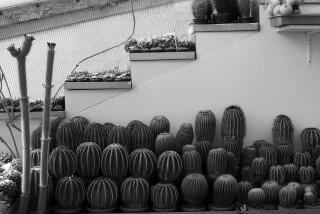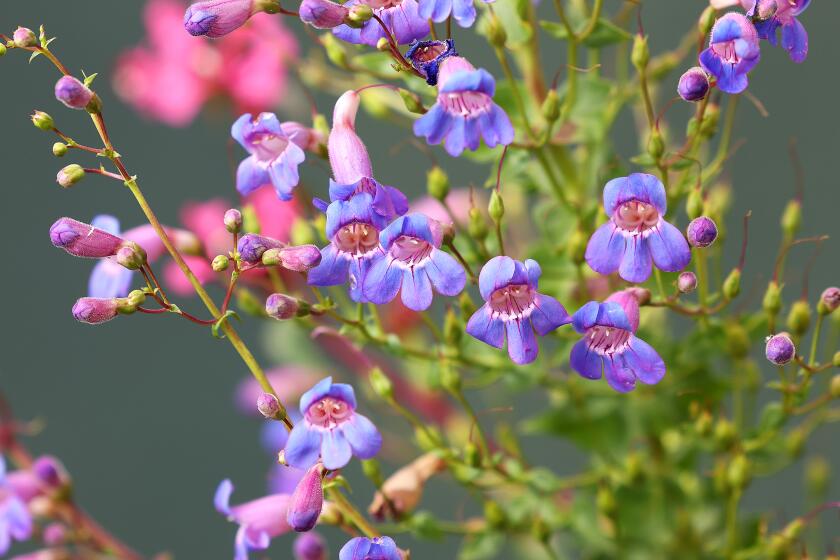Opuntia ficus-indica Prickly pearCactus with...
- Share via
Opuntia ficus-indica Prickly pear
Cactus with round, flat leaves, yellow flowers and bristly but edible fruit.
A few years ago, my neighbor’s enormous opuntia dropped a few leaves--about the size of Frisbees--on the sidewalk. I scooped one up, poked it into an empty spot in my front yard and forgot about it. Two years later I had a giant opuntia--6 feet tall and nowhere near finished with its growing.
Not all opuntias will get that big, but Opuntia ficus-indica can reach an impressive 15 feet, all of them dotted with mean bristles. (Some varieties of opuntia have spines like hypodermic needles and are not to be trifled with.)
Opuntias are very common in Southern California. That’s only fair, because they are native to the region, and the leaves and fruit are used in Latin cuisine. The pretty yellow flowers appear in the spring, followed by yellowish-red fruit about 4 inches long and 2 or 3 inches in diameter.
The fruit is peeled and the seeds strained out; when pureed, the resulting pulp is tart-sweet, perfect for sauces or vinaigrettes. The leaves, called nopales, are used grilled or in salads. Both flowers and leaves must be carefully debristled (the Latin supermarkets may have done this for you already); those with sensitive skin should wear rubber gloves when handling the raw fruit. Those “bristles” are tiny spines and are impossible to remove should you get them under your skin.
(“New Southwestern Cooking” by Carolyn Dille and Susan Belsinger and published by Macmillan has more information on preparing nopales and prickly pear fruit.)
In the landscape, opuntias are the perfect drought-tolerant plant. They don’t need any water once established, and very little when they’re getting started. A hedge of opuntias, like that around the old adobe at the Los Angeles State and County Arboretum in Arcadia, will keep out any marauder--except maybe the tiniest mouse. They look great in desert gardens, or as accents near Spanish-style houses. They are not comfortable in lawns or English cottage gardens.
The arboretum in Arcadia and the Huntington Library, Art Collections and Botanical Gardens in San Marino frequently offer opuntias for sale, and the plants are available at many (perhaps most) Southern California nurseries. The Cactus & Succulent Society of America can provide more information on opuntias and other cacti; contact Virginia Martin, 2631 Fairgreen Ave., Arcadia, Calif. 91006. Or just keep your eyes on a neighbor’s plant; it’s bound to lose a few leaves now and then.






